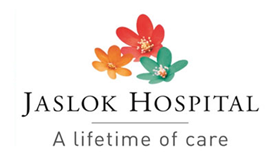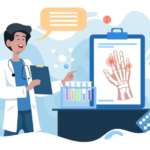From Bench to Bedside: Translational Research in Orthopedic Regenerative Medicine

Translational research in orthopedic regenerative medicine represents a bridge connecting laboratory discoveries to clinical applications aimed at improving patient outcomes. With a focus on restoring musculoskeletal function and enhancing the quality of life for individuals suffering from orthopedic disorders, this field is rapidly evolving. In this blog, we will explore the significance, key areas of research, challenges, and future directions in translational research within the realm of orthopedic regenerative medicine.
Understanding Translational Research
Translational research, often described as “bench to bedside,” is a collaborative process that transforms scientific findings from the laboratory into practical therapies for patients. This type of research is crucial in orthopedic regenerative medicine, where innovations can lead to improved treatments for conditions such as fractures, ligament tears, osteoarthritis, and other degenerative diseases.
The primary goal of translational research is to ensure that new discoveries in regenerative medicine are promptly adapted for clinical use. As such, it encompasses multiple phases: understanding the underlying biology of bone and cartilage healing, applying laboratory techniques in preclinical trials, and ultimately conducting clinical trials to evaluate the safety and effectiveness of new therapies.
Key Areas of Research
Bellow key research areas are essential for advancing the field of regenerative medicine and improving patient care.
Stem Cell Therapy
Stem cell therapy has emerged as one of the most promising approaches in orthopedic regenerative medicine. Researchers are investigating the use of mesenchymal stem cells (MSCs) for their capacity to differentiate into various types of tissues, including cartilage and bone. MSCs can be harvested from numerous sources, including bone marrow, adipose tissue, and umbilical cord blood.
These stem cells hold immense potential for treating joint injuries and degenerative conditions like osteoarthritis. By harnessing their regenerative properties, researchers aim to develop therapies that promote healing and restore function to damaged tissues, offering hope for patients who may otherwise face surgical interventions. Our RNR Medicine Department, the best orthobiologics treatment clinic in Mumbai at Jaslok Hospital, is at the forefront of researching these advanced therapies to provide patients with cutting-edge treatment options.
Tissue Engineering
Another vital area of research is tissue engineering, which focuses on creating biological substitutes to restore, maintain, or improve tissue function. This field combines scaffolds – materials that provide structural support for cell growth – with cells and biologics like growth factors. The ultimate goal is to create functional tissues that can replace or augment damaged structures in the musculoskeletal system.
Using innovative techniques, such as 3D printing, researchers can develop custom scaffolds tailored to the patient’s specific needs. This technology allows for the creation of complex tissue architectures that can enhance healing and improve surgical outcomes.
Biologics
Biologics refer to naturally occurring substances that can enhance healing processes in orthopedic injuries. These include growth factors, platelet-rich plasma (PRP), and extracellular matrix components. The use of biologics is grounded in their ability to stimulate cellular processes crucial for healing and tissue repair.
For example, incorporating growth factors that signal bone and cartilage regeneration can enhance the body’s natural ability to heal. The ongoing research into biologics aims to refine their application in clinical settings, with the hope of improving patient recovery times and outcomes.
Preclinical Studies and Clinical Trials
Before new therapies can be offered to patients, they undergo rigorous testing through preclinical studies and clinical trials. Preclinical studies often involve the use of animal models to evaluate the safety and efficacy of treatments. These studies are essential for understanding the mechanisms of action and potential side effects of emerging therapies.
Upon successful completion of preclinical testing, therapies advance to clinical trials, which are conducted in phases:
- Phase I: A small group of participants is introduced to the treatment to assess safety and optimal dosing.
- Phase II: The treatment is given to a larger group to evaluate its efficacy and further assess safety.
- Phase III: This phase involves large-scale testing to confirm effectiveness and monitor adverse reactions, leading to potential approval for public use.
Challenges in Translation
Despite the exciting advancements in orthopedic regenerative medicine, several challenges persist in translating research into clinical practice:
Scientific Hurdles
Biological variability among individuals remains a significant hurdle. Treatments that demonstrate positive results in preclinical studies may not yield the same outcomes in humans. Researchers are actively working to understand these variances and to develop standardized protocols that can enhance reproducibility in clinical settings.
Funding and Resources
Securing adequate funding for translational research can be challenging. The resources required to transition from bench research to clinical application are significant, and many innovative therapies may not make it to market due to financial constraints.
Ethical Considerations
As with any medical research, ethical considerations arise, particularly regarding patient consent and safety. Researchers must ensure that participants are fully informed of potential risks when enrolling in clinical trials, adhering to strict ethical guidelines throughout the process.
Innovative Technologies and Approaches
Emerging technologies play a crucial role in advancing translational research in regenerative orthopedic sports medicine:
Bioprinting
3D bioprinting technology allows researchers to create living tissues and complex structures that mimic natural anatomy. This innovation enables the customization of scaffolds and tissues tailored to individual patients, enhancing the likelihood of successful clinical outcomes. Bioprinting and gene therapy are among the advancements making waves, with best orthobiologics treatment hospital like our RNR Medicine Department at Jaslok Hospital embodying the commitment to apply these techniques to improve patient care.
Gene Therapy
Gene therapy aims to correct genetic defects and enhance cellular functions. In orthopedic applications, gene therapy can improve the regenerative capabilities of stem cells, potentially accelerating healing processes and offering alternative solutions for hard-to-treat injuries.
Point-of-Care Technologies
Innovative point-of-care diagnostic tools facilitate immediate diagnosis and treatment at the site of care. These technologies streamline patient management and improve access to effective therapies, particularly in remote or underserved areas.
A Patient-Centric Focus
A successful translational research approach involves placing patients’ needs at its core. Establishing relevant outcome measures ensures that new therapies are assessed not only for their clinical effectiveness but also for their impact on patients’ quality of life. Personalized medicine, which tailors treatments based on genetic factors and specific patient characteristics, emerges as a significant trend in improving therapeutic outcomes.
Future Directions in Translational Research
As translational research in orthopedic regenerative medicine continues to evolve, the importance of multidisciplinary collaboration cannot be overstated. Engaging researchers, clinicians, engineers, and industry professionals fosters innovation and accelerates the development of new treatments.
Longitudinal studies will be crucial for understanding the long-term effectiveness and safety of new therapies, as well as their impact on patient health outcomes. By addressing current challenges and harnessing innovative technologies, the future of regenerative orthopedic sports medicine looks promising.





